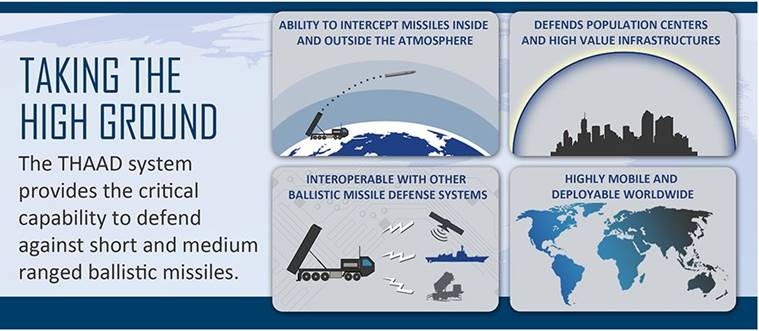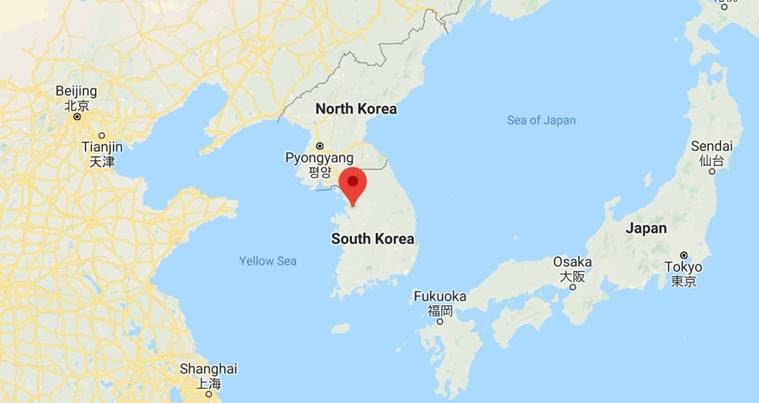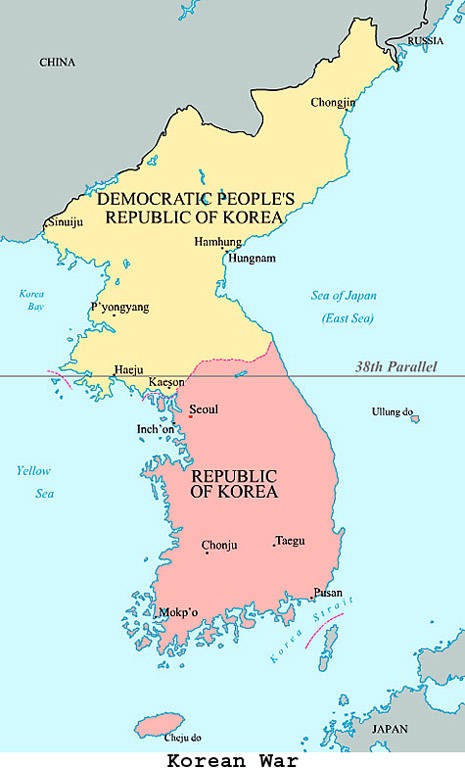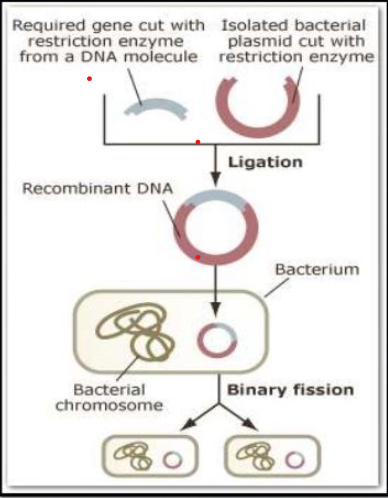Proposed Expansion of G7
Why in News
Recently, the USA has suggested the postponement of the 46th G7 (Group of 7) Summit which was scheduled to be held in June (2020) at Camp David (USA).
- Additionally, the USA President has also proposed the expansion of the G7 to be called ‘G10 or G11’.
G7
- Description:
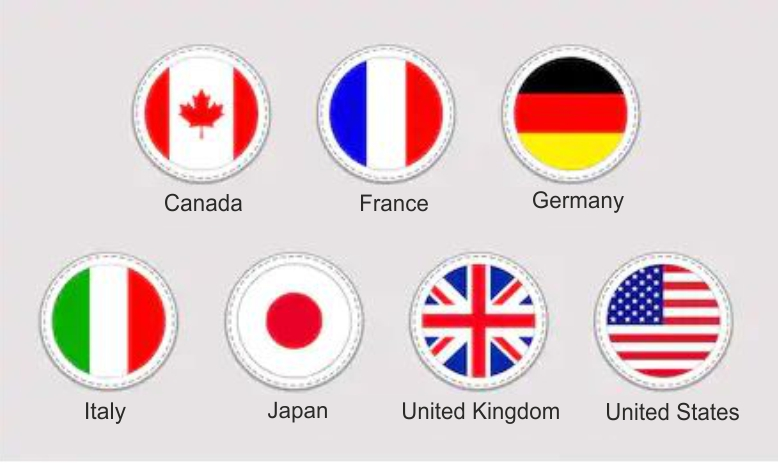
- The G7 or ‘Group of Seven’ consists of Canada, France, Germany, Italy, Japan, the United Kingdom, and the United States.
- It is an intergovernmental organisation that was formed in 1975 as an informal forum to discuss pressing world issues.
- Initially it focussed on economic issues but later it focussed on the several challenges such as the oil crashes of the 1970s, terrorism, arms control, and drug trafficking,etc.
- The group does not have a formal constitution or a fixed headquarters. The decisions taken by leaders during annual summits are non-binding.
- The G7 nations meet at annual summits that are presided over by leaders of member countries on a rotational basis.
- Host Country of the Summit:
- The host country not only holds the G7 presidency but also sets the agenda for the year.
- It also gets a chance to invite dignitaries from outside the G7 to attend the Summit.
- Presence of Sherpas:
- The groundwork for the Summit, including matters to be discussed and follow-up meetings, is done by the sherpas.
- The sherpas are generally personal representatives or members of diplomatic staff such as ambassadors.
Key Points
- Expansion of G7:
- The proposed expansion has suggested inclusion of India, Australia, South Korea and Russia in the grouping of the largest advanced economies.
- The existing G7 group has been called an outdated group of countries as it does not include emerging economies of the world and thus it is believed that the group does not follow the current world order.
- It is unclear that the proposed expansion will be permanent or temporary.
- Re-inclusion of Russia:
- The proposal to re-admit Russia is expected to receive strong reactions from other G7 member countries.
- Russia is seen as an ally of China.
- The G7 was known as the ‘G8’ for several years after the original seven were joined by Russia in 1997.
- The Group returned to being called G7 after Russia was expelled as a member in 2014 following the latter’s annexation of the Crimea region of Ukraine.
- The proposal to re-admit Russia is expected to receive strong reactions from other G7 member countries.
- India at the G7 Summit:
- India had attended the G7 summit of 2019 at Biarritz in France as a special guest of French President.
- India has attended the G8 five times as special guests by various hosts of the G8 Summit in the past.
- Attempt to Unite Allies Against China:
- China is not a member of G7 despite being the world's biggest population and second-biggest economy. But, China has relatively low levels of wealth per head of population. Thus it is not considered as an advanced economy like other G7 members.
- The expansion of G7 has been believed to be a plan to unite all traditional allies to deal with assertive diplomacy of China.
- The proposal comes amid ongoing issues between the US and China which includes Hong Kong’s autonomy to Taiwan, the origins of Covid-19, South China Sea tensions and trade issues.
G7 Vs G20
- Members: The G20 is a larger group of countries, which also includes G7 members.
- Apart from the G7 countries, the G20 comprises Argentina, Australia, Brazil, China, India, Indonesia, Mexico, Russia, Saudi Arabia, South Africa, South Korea, and Turkey.
- Share in Global Economy: The G20 countries make up around 80% of the world’s economy. G7’s share in global GDP has fallen to around 40%.
- Range of Issues: As opposed to the G7, the G20 discusses a broad range of issues including those concerning the global economy and financial markets.
Way Forward
- The rise of India, China, and Brazil over the past few decades has reduced the G7’s relevance. Thus, inclusion of emerging economies like India, South Korea,etc. may extend the support to establish equal levels for each country at global level.
- The proposed expansion may also help G7 to be a more representative institution than current G7 and subsequently to establish an equal platform at global level.
Universal Basic Income
Why in News
To deal with the economic inequality, unemployment and poverty created by the Covid-19 pandemic, many advocate Universal Basic Income (UBI) programme to be a solution.
Key Points
- In order to deal with the Covid-19 pandemic, the governments across the world have imposed measures like lockdown and social distancing.
- However, these measures have caused collateral damage to almost every sector of the economy, so much so that the International Monetary Fund held the current economic crisis could be the worst ever since the Great depression 1929.
- With almost 90% of India’s workforce in the informal sector without minimum wages or social security, micro-level circumstances in India are worse than anywhere else.
- Even before pandemic, India was struggling to provide job opportunities for millions of job aspirants who were entering the job market.
- Regular payments through Universal Basic Income (UBI) can ensure the sustenance of the workers engaged in the informal sector, at least till the economy normalises.
- Countries across the world, which include Kenya, Brazil, Finland, and Switzerland, have bought into this concept.
- Supporters of the UBI programme include Economics Nobel Laureates Peter Diamond and Christopher Pissarides, and tech leaders Mark Zuckerberg and Elon Musk.
Idea of Universal Basic Income
- The Economic Survey of India 2016-17 has advocated the concept of Universal Basic Income (UBI) as an alternative to the various social welfare schemes in an effort to reduce poverty.
- Idea behind the Universal Basic Income is that every person should have a right to a basic income to cover his needs, just by virtue of being a citizen.
- The purpose of the UBI is to prevent or reduce poverty and increase equality among citizens.
- UBI has five components:
- Universality- It is universal in nature.
- Periodic- Payments at periodic regular intervals (not one-off grants)
- Payments to individuals
- Payments in cash (not food vouchers or service coupons).
- Unconditionality- There are no preconditions attached with the cash transferred to the beneficiary.
Benefits of Universal Basic Income (UBI)
- UBI will provide secured income to individuals.
- The scheme will reduce poverty and income inequality in society.
- It will increase the purchasing power of every poor which will further increase aggregate demand.
- Easy to implement because no identification of the beneficiary is involved.
- It will reduce the wastage of government money because its implementation is very simple.
Issues In implementing UBI
- Lack of the political will because of the costs involved.
- The fiscal cost of a UBI pegged at Rs. 7,620, at 75% universality, was 4.9% of the GDP.
- The Economic Survey of India's (2016-17) model of UBI suggested providing Rs. 7,620 per annum to 75% of India's population.
- The income was based on Suresh Tendulkar's poverty line of 2011-12 inflation-indexed to 2016-17.
- A UBI on par with the numbers suggested by the Economic Survey could lead to targeted household incomes increasing by almost Rs. 40,000 per annum, since the average Indian household size is approximately five.
- The fiscal cost of a UBI pegged at Rs. 7,620, at 75% universality, was 4.9% of the GDP.
- Difficulty in reducing some of the existing subsidies to balance the resultant deficit.
- There is no guarantee that the given cash will be spent on productive activities, health & education, etc. It may be spent on tobacco, alcohol, drugs, and other luxury goods etc.
- Free cash to the people will increase the rate of inflation in the economy.
- Workers can refuse to work as a labourer or demand higher wages which can increase the cost of production of agricultural goods.
Way Forward
- The 2017 Economic Survey had flagged the UBI scheme as “a conceptually appealing idea” and a possible alternative to social welfare programmes targeted at reducing poverty.
- UBI envisages an uncompromised social safety net that seeks to assure a dignified life for everyone, a concept that is expected to gain traction in a global economy buffeted by uncertainties on account of globalization, technological change, and automation.
- If universal basic income ever had a time, it is now. It can be implemented to deal with the unemployment, income inequality and poverty posed by Covid-19 pandemic.
China’s Opposition to THAAD
Why in News
Recently, China has issued a statement reiterating its long-standing objections to the presence of the USA’s THAAD missile defence system in South Korea. This comes after the reports of an overnight operation to bring in new, replacement interceptor missiles to the USA base in South Korea.
Key Points
- THAAD:
- It is an acronym for Terminal High Altitude Area Defense, a transportable, ground-based anti-ballistic missile defence system.
- First proposed in 1987 and then finally deployed in 2008, the THAAD cannot be used as a form of attack against an enemy.
- It is designed to intercept and destroy short and medium-range ballistic missiles in their final flight phase.
- THAAD is coupled with space-based and ground-based surveillance stations, which transfer data about the incoming missile and inform the THAAD interceptor missile of the threat type classification.
- This system has been designed and manufactured by the USA company Lockheed Martin.
- It has been previously deployed in the United Arab Emirates (UAE), Guam, Israel, Romania as well.
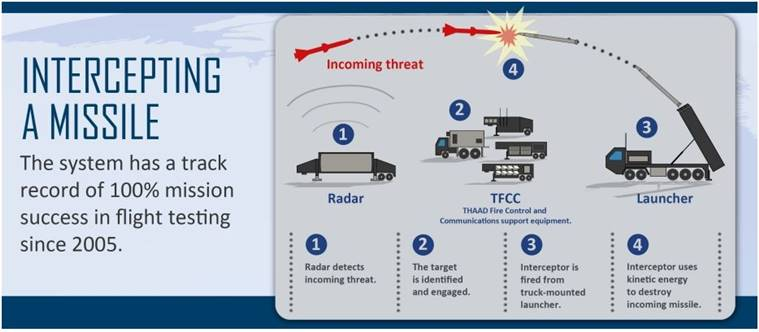
- Background:
- THAAD was deployed in South Korea as a countermeasure against potential attacks by North Korea, particularly after the country had engaged in testing ballistic missiles.
- In 2017, when North Korea test-fired a few missiles in the direction of USA bases in Japan, the USA moved the missile systems to its army base in Osan, South Korea.
- Ever since China has objected these moves causing deterioration of their relationship.
- For South Korea, North Korea poses a nuclear threat and the THAAD missile defence system is a necessity to counter that.
- The USA and South Korea have consistently maintained that these missiles are only to counter potential threats by North Korea.
- THAAD was deployed in South Korea as a countermeasure against potential attacks by North Korea, particularly after the country had engaged in testing ballistic missiles.
- China’s Concerns:
- China is less concerned about the missiles itself and more about the system’s inbuilt advanced radar systems that can track China’s actions.
- The USA’s presence and influence in East Asia, through its military bases in Japan and South Korea, hamper the geopolitics and complex conflicts of the region.
- It also interferes with Beijing’s long-term military, diplomatic and economic interests in the region.
- Repercussions on South Korea:
- Economic: Operations of South Korean businesses, including large conglomerates like LG, Lotte and Samsung, were hampered. These included shutting down of institutions and enterprises that had little to do with the defence and military, like golf courses and shopping malls.
- Tourism: Tourism from China to South Korea fell drastically. The tourism industry contributes significantly to South Korea’s economy.
- Entertainment: South Korea’s entertainment industry witnessed concerts, shows and other commercial ventures in China being forced to cancel.
- Cosmetics and Personal Care: The sales of South Korean cosmetics and beauty products were being impacted. They are extremely popular in China but due to calls on social media to boycott South Korean products, their sales went down.
- Demographic: Protests sparked off in South Korea against the deployment which has caused major worries regarding peace and security in the region.
Way Forward
China can be a reassuring regional partner if it acknowledges that the cause of tension on Korean Peninsula is North Korea’s pursuit of offensive weapons, not the deployment of defensive systems on South Korea’s land.
Violation of Armistice Agreement: UNC
Why in News
Recently, the United Nations Command (UNC) has found both North and South Korea guilty of violating the Korean Armistice Agreement 1953 due to gunfire along the Korean Demilitarised Zone (DMZ) between the two countries.
United Nations Command
- The USA led UNC is a unified command for the multinational military forces.
- It oversees affairs in the heavily fortified DMZ and ensures the terms of the armistice are being agreed upon by both North Korea and South Korea.
- It was established on 24th July 1950 in Tokyo, Japan.
Key Points
- The UNC led a multinational special investigation regarding the recent shootings at DMZ whose findings have not been accepted by South Korea owing to non-cooperation by North Korea in the investigations.
- Investigations had been unable to determine whether the shootings that originated from North Korea had been intentional.
- The shooting also violates the Pyongyang Joint Declaration of September 2018, an inter-Korean military agreement, which calls for reduced military tensions between the two countries.
Korean Armistice Agreement 1953
- The armistice agreement halted the Korean War of 1950-53 and established the Korean Demilitarized Zone (DMZ), the current border between the two nations.
- India has played a major role in the cease-fire agreement, strengthening India-South Korea relations.
- The DMZ runs close to the 38th parallel line.
- The armistice was signed on 27th July 1953 and was designed to ensure a complete cessation of hostilities and of all acts of armed force in Korea until a final peaceful settlement is achieved.
- It was signed by representatives of the UNC, Korean People’s Army (KPA) and the Chinese People’s Volunteer Army (PVA).
- South Korea did not sign the armistice as it refused to accept it.
- It was only a ceasefire and there was no official declaration of the end of the war so in the absence of an official peace treaty, as is the norm, the two countries officially remain at war.
- However, in December 1991, North and South Korea signed a pact agreeing to refrain from aggression.
Way Forward
- Both North and South Korea should work towards improving their relations and seek a potential resolution of the situation by bilateral talks and discussions possibly leading to a peace treaty which would end the Korean war formally. Denuclearisation of the Korean peninsula and USA removing its nuclear-capable forces from South Korea is a prerequisite for ensuring balance, peace, mutual cooperation and growth.
SpaceX Crew Dragon
Why in News
- Recently, a spacecraft, Crew Dragon, built by SpaceX has successfully carried astronauts of National Aeronautics and Space Administration (NASA) at the International Space Station.
- SpaceX became the first private company to launch people (human spaceflight) into orbit, a feat achieved by the US, Russia & China.
Key Points
- Crew Dragon:
- It is a part of the Dragon 2, a class of reusable spacecraft developed and manufactured by American aerospace manufacturer SpaceX.
- It is the fifth class of US spacecraft to take human beings into orbit, after the Mercury, Gemini, Apollo and Space Shuttle programs.
- The rocket, named Falcon 9, which carried the spaceship into the orbit, was also built by SpaceX.
- It is done under the Demo-2 Mission of NASA and SpaceX.
- Significance of Private Participation:
- The landing by SpaceX flight is a culmination of more than decade-long efforts to enable private players to build and operate what essentially is a commercial taxi-service to space, and allow NASA to concentrate on deep space exploration, and work more vigorously towards taking humans to the moon, and Mars.
- The United States now plans to return to the Moon in 2024 under the Artemis mission, establishing a launching pad to Mars by 2030.
- India and Private Space Companies:
- While there are many private companies operating in the space sector in the United States, their contribution is not much significant in India.
- Most of them collaborate with the Indian Space Research Organisation (ISRO), in building and fabricating the components that go into making rockets and satellites.
- However, launch services, including the building of rockets or launch vehicles are still a monopoly of government space agency, i.e. ISRO.
Importance of Private Participation in India
- Space tourism is one among several opportunities that Indian businesses may be keen to explore. A policy framework to enable private participation in this sector, of course, would have to be formulated by the government.
- Small satellite revolution is underway, globally, 17,000 small satellites are expected to be launched between 2020 and 2030. A strong private sector in space will help India to tap into this lucrative commercial space launch market.
- Increasing space competitiveness:
- Singapore is offering itself as a hub for space entrepreneurship based on its legal environment, availability of skilled manpower and equatorial location.
- New Zealand is positioning itself as a location for private rocket launches.
- China, too, has changed its rules to allow private commercial space activity.
- ISRO has been a genuine global pioneer of aerospatial cost compression on several fronts. Cost-effectiveness has given the agency a distinct edge in the commercial arena of satellite launch services.
- With such a valuable base of expertise within the country, it is only natural to expect the emergence of a private space industry that could prove globally competitive.
Way Forward
- The landing by the SpaceX flight underlines the fact that space research and exploration is now a much more collaborative enterprise than earlier.
- There is also a growing realisation that space agencies need to direct their energies and resources more towards scientific research and deep space exploration.
- It’s been fifty years since the landing on the moon and efforts to take human beings to Mars and other celestial bodies, needs to be expedited.
- Getting back to the Moon would also require huge amounts of financial resources that most of the space agencies and private players are expected to infuse fresh investments and also technological innovation that will benefit everyone.
Responsible AI for Youth
Why in News
Recently, the government has launched a National Program for the youth namely, ‘Responsible Artificial Intelligence (AI) for Youth’.
- The government has also launched India’s National Artificial Intelligence Portal called www.ai.gov.in.
Artificial Intelligence
- Artificial Intelligence (AI) describes the action of machines accomplishing tasks that have historically required human intelligence.
- It includes technologies like machine learning, pattern recognition, big data, neural networks, self algorithms etc.
- Example: Facebook’s list of suggested friends for its users, a pop-up page, telling about an upcoming sale of the favourite brand of shoes and clothes, that comes on screen while browsing the internet, are the work of artificial intelligence.
- AI involves complex things such as feeding a particular data into the machine and making it react as per the different situations.
National Artificial Intelligence Portal
- The portal has been jointly developed by the Ministry of Electronics and Information Technology and National Association of Software and Services Companies (NASSCOM).
- The portal will work as a one stop digital platform for sharing of resources such as articles, startups, investment funds in AI, resources, companies and educational institutions related to AI in India. It will also share documents, case studies, research reports etc.
- It also has a section about learning and new job roles related to AI.
Responsible AI for Youth Programme
- Aims:
- The Program is designed to reach out to students from Government schools pan India and provide them with an opportunity to become part of the skilled workforce in an inclusive manner.
- It aims to help reduce the skill gap, while enabling youth to create meaningful social impact solutions.
- It also intends to provide a platform for relevant AI skill-sets and access to required AI tool-sets to make youth digitally ready for the future.
- Description:
- The Program has been created and launched by the Ministry of Electronics & IT in collaboration with Intel India, with support from the Ministry of Human Resource Development.
- The National Programme is open to students of classes 8-12 from Central and State government-run schools (including KVS, NVS, JNV) from across the country.
- The Program will be implemented in a phase-wise manner and in its first phase, each State will nominate 10 teachers as per the eligibility criteria.
- These teachers will be provided sessions aimed to help them understand the premise and identify 25-50 potential students for the Program.
- The identified students will attend online training sessions on AI and will learn to identify social impact projects that may be created using AI.
- Further, top 20 innovative projects will be selected by an independent committee of experts and provided opportunities to showcase at relevant platforms.
Way Forward
- The launch of the programme will help to develop the base for Artificial Intelligence in the country.
- India’s AI approach will also help for inclusion and empowerment of human beings by supplementing growth and development specifically in the field of education, agriculture, healthcare, e-commerce, finance, telecommunications, etc.
- Thus introduction of the Responsible AI for Youth Programme is expected to find innovative long term solutions which will help to reduce the existing digital gap in the country.
Measures Related to Biosafety Regulations
Why in News
The Department of Biotechnology (DBT), Ministry of Science and Technology has taken measures to streamline the biosafety regulation for researchers and industries involved in Recombinant DNA Technology and management of hazardous microorganisms in the wake of Covid-19 pandemic.
Key Points
- Operationalization of Indian Biosafety Knowledge Portal:
- It was launched in May 2019 through which the Department receives all new applications related to research proposals. This has made the whole process transparent and time bound.
- It is a web based portal, with a major thrust to reach out to researchers, industry and other stakeholders to provide latest scientific information and regulatory guidance related to authorization of Genetically Modified Organisms/Living Modified Organisms (GMOs/LMOs) and products thereof.
- Institutional Biosafety Committee: This committee has been delegated authority to take decisions on applications of import, export and exchange of GMOs and product thereof for R&D purposes under the Environment (Protection) Act 1986.
- Facilitation of Research and Development on Covid-19: The DBT has proactively taken several steps to facilitate researchers and industries involved in research on Covid-19.
India's Biosafety and Recombinant DNA Guidelines
- Biosafety refers to policies and procedures adopted to avoid risk to human health and safety and to the conservation of the environment as a result of the use of GMOs for research and trade
- Under the Biosafety Research programme, main emphasis is given to facilitate the implementation of biosafety procedures, rules and guidelines under Environment (Protection) Act 1986 and Rules 1989 to ensure safety from the use of GMOs and products thereof in research and application to the users as well as to the environment.
- A three tier mechanism comprising Institutional Biosafety Committees (IBSC) at the Institute/company; the Review Committee on Genetic Manipulation (RCGM) in the Department of Biotechnology; and the Genetic Engineering Approval Committee (GEAC) in the Ministry of Environment & Forests (MoE&F) for granting approval for research and development activities on recombinant DNA products, environmental release of Genetically Engineered (GE) crops and monitoring and evaluation of research activities involving recombinant DNA technology has been established.
Recombinant DNA Technology
- The technology used for producing artificial Deoxyribonucleic Acid (DNA) through the combination of different genetic materials (DNA) from different sources is referred to as Recombinant DNA Technology.
- Recombinant DNA technology is popularly known as genetic engineering.
- Process of Recombinant DNA Technology: Recombinant DNA technology involves several steps in specific sequence:
- Isolation of Genetic Material: It involves the isolation of desired DNA in its purest form i.e. free from macromolecules.
- Cutting the gene at the recognition sites: The restriction enzymes determine the location at which the desired gene is inserted into the vector genome (a virus or plasmid that is used to ferry a desired DNA sequence into a host cell).
- Ligation of DNA Molecules: Ligation involves joining of the two pieces – a cut fragment of DNA and the vector together with the help of the enzyme DNA ligase.The DNA molecule thus produced is called recombinant DNA.
- Insertion of Recombinant DNA into Host: The recombinant DNA is introduced into a recipient host cell. This process is termed as Transformation.
- After the insertion of the recombinant DNA into the host cell, it gets multiplied and is expressed in the form of the manufactured protein under optimal conditions.
- The effectively transformed cells/organisms carry forward the recombinant gene to the offspring.
- The recombinant DNA molecule produces new genetic combinations that are of value to science, medicine, agriculture, and industry.
Application
- Gene Therapy: It is used as an attempt to correct the gene defects which give rise to heredity diseases.
- Clinical diagnosis–
- It has been useful in detecting the presence of Human immunodeficiency Virus in a person.
- Enzyme-Linked Immunosorbent Assay (ELISA) is an example of the application of recombinant DNA technology.
- Enzyme-Linked Immunosorbent Assay (ELISA) is a test that detects and measures antibodies in blood.
- Medicines: For the production of Insulin.
- Agriculture: To produce genetically-modified organisms such as Flavr Savr tomatoes.
World No Tobacco Day
Why in News
Every year, on 31st May, the World Health Organization (WHO) and global partners celebrate World No Tobacco Day (WNTD).
- The annual campaign is an opportunity to raise awareness on the harmful and deadly effects of tobacco use and second-hand smoke exposure, and to discourage the use of tobacco in any form.
Key Points
- Focus of WNTD
- The theme for the World No Tobacco Day 2020 is #TobaccoExposed.
- Its focus is on protecting youth from industry manipulation and preventing them from tobacco and nicotine use.
- This is especially important right now as studies show that smokers have a higher risk for a severe case of coronavirus.
- A Leading Cause of Cancer:
- Tobacco use is a leading cause of cancer and of death from cancer.
- Tobacco use causes many types of cancer, including cancer of the lung, larynx (voice box), mouth, esophagus, throat, bladder, kidney etc.
- Decline in Tobacco Consumption:
- According to a WHO report, there is a decline in the overall global tobacco use and the number of people consuming it.
- The report predicts that by 2020, there will be 10 million fewer tobacco users compared to 2018 and another 27 million less by 2025, amounting to 1.299 billion.
- In India, the prevalence of tobacco use (male and female combined) in 2000 was 44% and it is expected to reduce almost by half to 22.3% by 2025.
- Globally, the prevalence was 33.3% in 2000, and is projected to reach 20.9% in 2025.
- Tobacco Control Measures
- WHO Framework Convention on Tobacco Control (WHO FCTC)
- FCTC is the first international treaty negotiated under the auspices of the WHO.
- It was adopted by the World Health Assembly on 21 May 2003 and entered into force on 27 February 2005.
- The FCTC’s measures to combat tobacco use include:
- Price and tax measures.
- Large, graphic warnings on tobacco packages.
- 100% smoke-free public spaces.
- A ban on tobacco marketing.
- Support for smokers who want to quit.
- Prevention of tobacco industry interference.
- mCessation Programme:
- It is an initiative using mobile technology for tobacco cessation.
- India launched mCessation using text messages in 2016 as part of the government’s Digital India initiative.
- It uses two-way messaging between the individual seeking to quit tobacco use and programme specialists providing them dynamic support.
- WHO Framework Convention on Tobacco Control (WHO FCTC)
Scorpion Fish: Scorpaenopsis neglecta
Why in News
Recently, researchers at the Central Marine Fisheries Research Institute (CMFRI) have found a rare Scorpionfish (Scorpaenopsis neglecta) from Sethukarai coast in the Gulf of Mannar.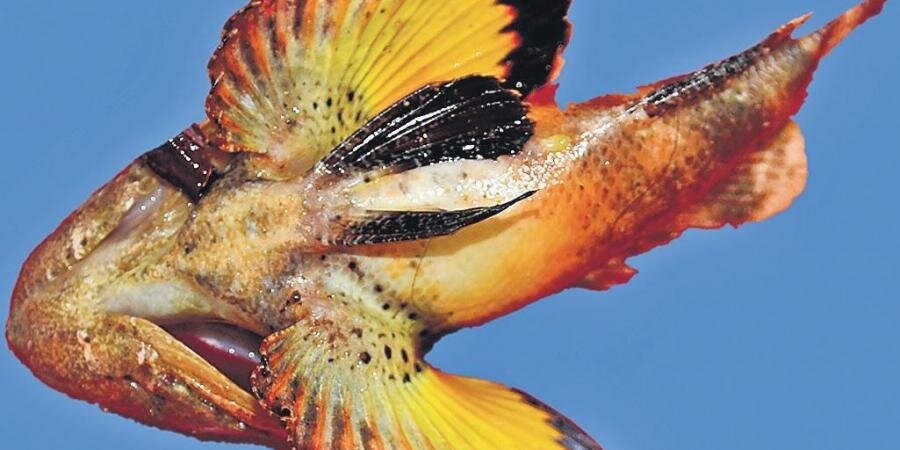
- This for the first time the particular species is discovered alive in Indian waters.
- It has been deposited in the National Marine Biodiversity Museum of the CMFRI.
Key Points
- Characteristics of Scorpaenopsis neglecta:
- Powerful sensory system:
- Unlike other fish, this band-tail Scorpion fish uses its lateral sensory system instead of eyes to hunt its prey.
- Lateral sensory system is a system of sense organs found in fishes which is used to detect movement, vibration, and pressure gradients in the surrounding water.
- Colour changing:
- The fish has the ability to change colour and camouflage to escape from predators and while catching a prey.
- Camouflage: It is a defense or tactic that organisms use to disguise their appearance, usually to blend in with their surrounding environment.This allows prey to avoid predators, and for predators to sneak up on prey.
- Neurotoxic:
- The fish is called ‘scorpionfish’ because its spines contain neurotoxin.
- Neurotoxins are chemical substances that are poisonous to the nervous system.
- Neurotoxins work by disrupting chemical signals sent between neurons and paralysing the whole system.
- Generally snakes i.e. King Cobra and marine snakes have these types of venom
- When the spines pierce an individual, the venom gets injected immediately.
- Eating the fish would also lead to death.
- The fish is called ‘scorpionfish’ because its spines contain neurotoxin.
- Powerful sensory system:
- About the Scorpionfish:
- Scorpionfish belong to the family Scorpaenidae which are mostly marine fish that includes many of the world's most venomous species.
- It is commonly found in the Indo-West Pacific region of the world.
- It is a biogeographic region of Earth's seas, comprising the tropical waters of the Indian Ocean, the western and central Pacific Ocean, and the seas connecting the two in the general area of Indonesia.
- It is a nocturnal feeder and lays motionless in the sea bottom and waits for the prey to come close to it.
- Nocturnal species are those which prefer to be active at night and sleep during the day. E.g. Bats.
The Central Marine Fisheries Research Institute
- It was established by the Government of India in 1947 under the Ministry of Agriculture and Farmers Welfare and later it joined the Indian Council of Agricultural Research (ICAR) family in 1967 .
- It is a leading tropical marine fisheries research institute in the world, headquartered in Kochi, Kerala.
- Objectives:
- Marine Fishery Resource Assessment.
- Productivity and Production Enhancement through Mariculture.
- Conservation of Marine Biodiversity.
- Transfer of Technology, Training and Consultancy.
Statehood Day of Goa
Why in News
On the Statehood Day of Goa (30th May), the Prime Minister greeted the people of the state and praised the traditions and culture of the state highlighting its contributions to the national progress.
Key Points
- Goa is located on the southwestern coast of India within the region known as the Konkan, and geographically separated from the Deccan highlands by the Western Ghats.
- Capital: Panji
- Official Language: Konkani
- Borders: It is surrounded by Maharashtra to the north and Karnataka to the east and south, with the Arabian Sea forming its western coast.
- History:
- As India gained independence on 15th August, 1947, it requested the Portugese to cede their territories. However, Portuguese refused.
- In 1961, Indian Government launched Operation Vijay and annexed Daman and Diu, islands and Goa with the Indian mainland.
- On 30th May, 1987, the territory was split and Goa was formed. Daman and Diu remained Union Territory.
- Geography:
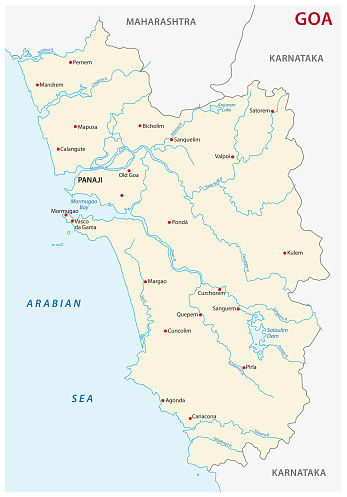
- The highest point of Goa is Sonsogor.
- Goa's seven major rivers are the Zuari, Mandovi, Terekhol, Chapora, Galgibag, Kumbarjua canal, Talpona and the Sal.
- Most of Goa's soil cover is made up of laterites.
- Wildlife Sanctuaries and National Parks:
- Dr. Salim Ali Bird Sanctuary
- Mhadei Wildlife Sanctuary
- Netravali Wildlife Sanctuary
- Cotigao Wildlife Sanctuary
- Bhagwan Mahaveer Sanctuary
- Mollem National Park

